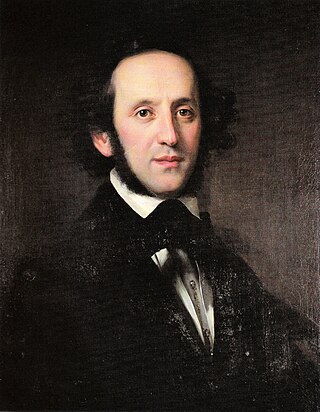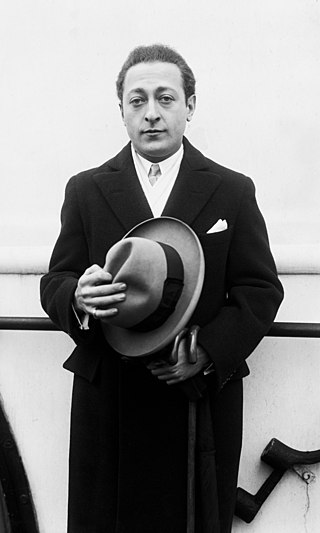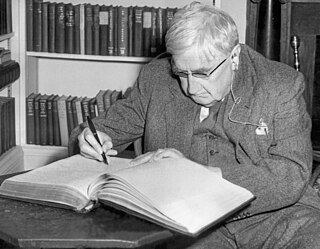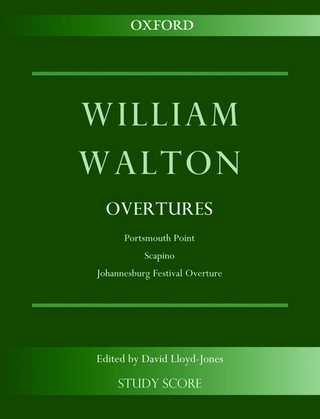Notes, references and sources
Notes
- ↑ At Walton's suggestion Covent Garden instead commissioned Hans Werner Henze, who composed the music for Ondine . [4]
- ↑ The musical analyst Anthony Burton comments that this pattern is similar to that of Prokofiev’s First Violin Concerto, which, he suggests, may have been Walton’s original model. [10]
Related Research Articles

Sir William Turner Walton was an English composer. During a sixty-year career, he wrote music in several classical genres and styles, from film scores to opera. His best-known works include Façade, the cantata Belshazzar's Feast, the Viola Concerto, the First Symphony, and the British coronation marches Crown Imperial and Orb and Sceptre.
The Cello Concerto in A minor, Op. 129, by Robert Schumann was completed in a period of only two weeks, between 10 October and 24 October 1850, shortly after Schumann became the music director at Düsseldorf.

Felix Mendelssohn's Violin Concerto in E minor, Op. 64, MWV O 14, is his last concerto. Well received at its premiere, it has remained among the most prominent and highly-regarded violin concertos. It holds a central place in the violin repertoire and has developed a reputation as an essential concerto for all aspiring concert violinists to master, and usually one of the first Romantic era concertos they learn. A typical performance lasts just under half an hour.

Edward Elgar's Cello Concerto in E minor, Op. 85, his last major completed work, is a cornerstone of the solo cello repertoire. Elgar composed it in the aftermath of the First World War, when his music had already become out of fashion with the concert-going public. In contrast with Elgar's earlier Violin Concerto, which is lyrical and passionate, the Cello Concerto is for the most part contemplative and elegiac.

The Violin Concerto by William Walton was written in 1938–39 and dedicated to Jascha Heifetz, who commissioned the work and performed it at its premiere on 7 December 1939 with the Cleveland Orchestra conducted by Artur Rodziński. The British premiere, delayed by the Second World War, was given on 1 November 1941, with Henry Holst as soloist and the composer conducting. Walton later reorchestrated the concerto; the revised version was premiered in 1944. The work has been frequently recorded and has established itself as one of the composer's most durable compositions.
The Cello Concerto in B minor, Op. 104, B. 191, is the last solo concerto by Antonín Dvořák. It was written in 1894 for his friend, the cellist Hanuš Wihan, but was premiered in London on March 19, 1896, by the English cellist Leo Stern.
Camille Saint-Saëns composed his Cello Concerto No. 1 in A minor, Op. 33, in 1872, when he was 37 years old. He wrote this work for the French cellist, viola da gamba player and instrument maker Auguste Tolbecque. Tolbecque was part of a distinguished family of musicians closely associated with the Société des Concerts du Conservatoire, France's leading concert society. The concerto was first performed on January 19, 1873, at the Paris Conservatoire concert with Tolbecque as soloist. This was considered a mark of Saint-Saëns' growing acceptance by the French musical establishment.
The Viola Concerto by William Walton was written in 1929 and first performed at the Queen's Hall, London on 3 October of that year by Paul Hindemith as soloist and the composer conducting. It had been written with the violist Lionel Tertis in mind, and he took the work up after initially rejecting it. The concerto established Walton as a substantial figure in British music and has been recorded by leading violists internationally. Walton revised the instrumentation of the concerto in 1961, lightening the orchestral textures.

Ralph Vaughan Williams's Symphony No. 8 in D minor was composed between 1953 and 1955. Sir John Barbirolli, its dedicatee, conducted the Hallé Orchestra in the premiere at the Kings Hall in Manchester, on 2 May 1956. It is the shortest of the composer's nine symphonies, and is mostly buoyant and optimistic in tone.
The Symphony No. 2 by William Walton was written between 1957 and 1960, and premiered in September 1960. It received a mixed reception at first: some critics thought Walton's music old-fashioned. Subsequently it has been re-evaluated and praised. The work was first performed by the Royal Liverpool Philharmonic Orchestra, conducted by John Pritchard and was first recorded by the Cleveland Orchestra, conducted by George Szell. It has subsequently been recorded by conductors from Britain, the US and elsewhere.
The Symphony No. 1 in B♭ minor is one of two symphonies by the English composer William Walton. The composer had difficulty in completing the work, and its first public performance was given without the finale, in 1934. The complete four-movement work was premiered the following year.

The Cello Concerto in D major is Arthur Sullivan's only concerto and was one of his earliest large-scale works. It was written for the Italian cellist Alfredo Piatti and premiered on 24 November 1866 at the Crystal Palace, London, with August Manns conducting. After this, it was performed only a few times. The score was not published, and the manuscript was destroyed in a fire in the 1960s, but the full score was reconstructed by the conductors Sir Charles Mackerras and David Mackie in the 1980s. Their version was premiered and published in 1986.

The Cello Concerto of Pyotr Ilyich Tchaikovsky is a conjectural work based in part on a 60-bar fragment found on the back of the rough draft for the last movement of the composer's Sixth Symphony, the Pathétique. In 2006, Ukrainian composer and cellist Yuriy Leonovich completed the work.
Ralph Henry Kirshbaum is an American cellist. His award-winning career combines the worlds of solo performance, chamber music, recording and pedagogy.
William Brocklesby Wordsworth was an English composer. His works, which number over 100, were tonal and romantic in style in the widest sense and include eight symphonies and six string quartets.
Andrew Shulman is an English virtuoso cellist, conductor and composer. He is currently the principal cellist of the Los Angeles Chamber Orchestra and maintains his cello studio at the University of Southern California's Thornton School of Music in Los Angeles, California.

Johannesburg Festival Overture is a composition for orchestra by the English composer William Walton, commissioned to mark the seventieth anniversary of Johannesburg in 1956. It is a short, lively piece, fast-moving throughout.
Improvisations on an Impromptu of Benjamin Britten is an orchestral piece by William Walton. It was first performed by the San Francisco Symphony Orchestra, conducted by Josef Krips, on 14 January 1970. Its European premiere was at Benjamin Britten's Aldeburgh Festival in June of that year. The work has subsequently been recorded for commercial release.
William Walton's Variations on a Theme by Hindemith is an orchestral piece in eleven continuous sections, first performed in 1963. It is a tribute to Walton's friend and fellow composer Paul Hindemith.
William Walton's Partita for Orchestra is a three-movement work for large orchestra, composed for, dedicated to and first performed by the Cleveland Orchestra and its conductor George Szell. The work was composed in 1957 and premiered on 30 January 1958.
References
- ↑ Kennedy, pp. 181 and 262
- ↑ Adams, Byron. "Walton, Sir William", Grove Music Online, Oxford University Press. Retrieved 4 February 2019 (subscription required)
- ↑ Kennedy, Michael. "Walton, Sir William Turner", Oxford Dictionary of National Biography, Oxford University Press. Retrieved 4 February 2019 (subscription required)
- 1 2 3 Kennedy, p. 196
- ↑ Newton, pp. 128–129
- ↑ Lloyd, pp. 229–230
- 1 2 Howes, p. 109
- 1 2 Rutland, Harold. "Walton's New Cello Concerto", The Musical Times, February 1957, pp. 69–71 (subscription required)
- ↑ Greenfield, Edward. "Gramophone Notes", The Manchester Guardian, 21 July 1959, p. 5 (subscription required)
- 1 2 3 4 5 6 Burton, Anthony (2015). Notes to Chandos CD CHSA 5153 OCLC 905662446
- 1 2 3 Howes, p. 101
- 1 2 3 Kennedy, p. 203
- ↑ Anderson, Keith (1999). Notes to Naxos CD 8.554325 OCLC 593847849
- ↑ Howes, p. 102
- 1 2 3 Kennedy, p. 204
- 1 2 3 Howes, p. 108
- ↑ Kennedy, p. 197
- ↑ Kennedy, p. 198
- ↑ "Walton's Cello Concerto", The Times, 1 February 1957, p. 3
- ↑ Heyworth, Peter. "Music of the Establishment", The Observer, 17 February 1957, p. 11
- ↑ "Walton's Cello Concerto: A modern masterpiece", The Manchester Guardian, 1 May 1958, p. 7
- ↑ "Sir William Walton's Four Concertos: Composer content to be himself", The Times, 22 February 1957, p. 3
- ↑ Johnson Stephen. "The Selected Letters of William Walton", Tempo, July 2020, pp. 51–52 (subscription required)
- ↑ Müller-Schott, Daniel (2008). Notes to Orfeo CD C 621 061 A OCLC 993504700
- ↑ "William Walton Cello Concerto", WorldCat. Retrieved 4 February 2019
- ↑ Ross, M. (2010). Notes to Signum Records CD SIGCD220 OCLC 1040340875
- ↑ Aschenbach, Andrew. "Walton Cello Concerto", Gramophone, January 2015
- ↑ "Walton Cello Concerto", BBC. Retrieved 4 February 2019
Sources
- Howes, Frank (1965). The Music of William Walton. Oxford: Oxford University Press. ISBN 978-0-19-315412-4.
- Kennedy, Michael (1989). Portrait of Walton . Oxford: Oxford University Press. ISBN 978-0-19-816705-1.
- Lloyd, Stephen (2001). William Walton: Muse of Fire. Woodbridge: Boydell Press. ISBN 978-0-85115-803-7.
- Newton, Ivor (1966). At the Piano. London: Hamish Hamilton. OCLC 941036910.